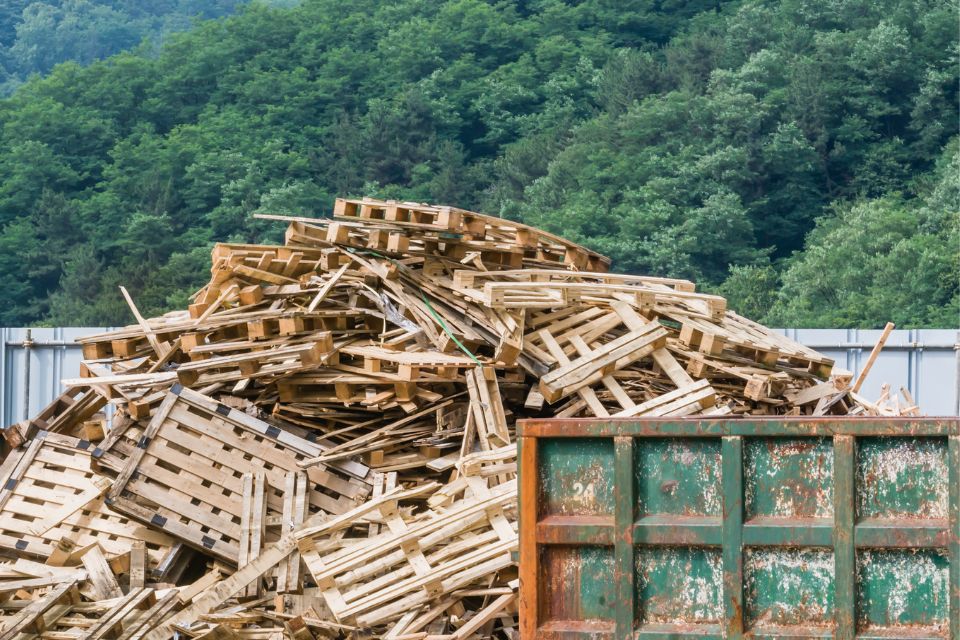Wood pallets are essential tools for businesses when it comes to transportation and storage. They have recently gained attention for their environmental benefits. By understanding why wood pallets are eco-friendly, we can make informed decisions and contribute to a healthier planet. We’ll discuss how wood pallets contribute to sustainability and provide environmental advantages. We’ll also compare them to alternative transportation and storage options.
1. Renewable and Recyclable Materials
One key benefit of using wood pallets is their recyclability. Wood is a renewable and biodegradable material that businesses can easily repurpose, reuse, or recycle. Unlike plastic or metal pallets, wood pallets can undergo refurbishment or be turned into new products, such as mulch or particleboard, once they’ve reached the end of their life cycle.
The environmental benefits of recycling pallets are great. By reusing and recycling wood pallets, we can reduce waste in landfills and conserve natural resources. Choosing wood over other materials allows us to simultaneously minimize environmental impact and support local economies that depend on the forestry industry.
2. Reducing Carbon Emissions and Creating a Sustainable Ecosystem
Wood pallets help reduce carbon emissions. As trees grow, they absorb and store carbon dioxide from the atmosphere. When pallet producers harvest wood responsibly and use it for pallet production, it continues to store that carbon for the duration of the pallet’s life. Also, manufacturing wood pallets requires less energy and produces fewer emissions compared to plastic or metal alternatives.
Pallets made of non-renewable resources like plastics and metals can emit harmful chemicals during disposal, negatively impacting the environment. Choosing wood pallets helps minimize these emissions and protect our ecosystems.
3. The Pallet Lifecycle: From Manufacturing to Disposal
Consider the entire life cycle of the pallet when comparing different materials. Wood pallets have a lower environmental impact throughout their life cycle, starting with a lower carbon footprint during manufacturing. When used appropriately, people can repair and reuse wood pallets multiple times, further extending their life span. Once they become unusable, businesses can recycle or repurpose them, reducing waste and conserving resources.
A crucial factor in ensuring the sustainability of wood pallets is responsible forest management. Considering this helps maintain healthy forests and biodiversity. By supporting the use of wood pallets produced from certified sustainable sources, businesses can contribute to the long-term stewardship of our environment.
Wood pallets serve as an environmentally friendly alternative to traditional transportation and storage options. They contribute to the reduction of carbon emissions and waste while promoting renewable, recyclable materials. By choosing wood pallets, we can take one small step toward a more sustainable future.

